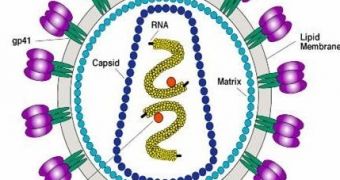Breastfeeding could become safe in the case of HIV-infected mothers by means of a simple method of flash-heating breast milk.
A new research made at the Berkeley and Davis campuses of the University of California gives hope to mothers in developing countries. The easy-to-apply technique consists in heating a glass jar of expressed breast milk in a water pan over a flame or single burner. "HIV can be transmitted to the baby via breastfeeding. But for infants in developing countries where infant mortality is already so high from diarrhea and other illnesses, they can't afford to lose the antibodies, other anti-infective agents and the optimal nutrition found in breast milk", said lead author Kiersten Israel-Ballard, a doctoral candidate at UC Berkeley's School of Public Health.
Flash-heating breast milk was known to kill bacteria while retaining the milk's antimicrobial weapons, as well as most of its antibodies. "We wanted to be sure that there was scientific evidence that flash-heated milk was truly free of HIV, nutritious and immunologically beneficial.", said senior author Barbara Abrams, UC Berkeley professor of epidemiology and maternal and child health.
Flash-heating warms the milk for a shorter period of time, being a better method of protecting the anti-infective and nutritional properties of breast milk. The necessary low-tech materials are readily available in local communities in the poor nations. Each year, about 700,000 children get infected with HIV, and about 40 % acquire the virus due to prolonged breastfeeding.
But in poor regions mothers cannot afford buying infant formula, water is usually contaminated, and socio-cultural factors would make the other condemn the HIV infected mothers; still, WHO still recommends an exclusive breastfeeding for up to six months, as in this case, the risk of getting infected with HIV is of just 3 to 4 %.
Moreover, formula milk added to breast milk increases by 3 to 4 times the risk of HIV transmission, due to allergens and contaminants that impair the epithelial lining of a baby's digestive tract, easing the virus transfer.
Even so, weaning in poor regions was linked to risk of malnutrition, diarrhea and other diseases that kill the baby. "Our method of flash-heating breast milk could be particularly important at the time the mother stops nursing. Even if only a small proportion of HIV-positive mothers in resource-poor countries can successfully express and flash-treat their milk, this simple, inexpensive and potentially sustainable method could still save thousands of babies from HIV infection while providing most of the health benefits of human milk." said Abrams.
Just 30 out of 98 samples of breast milk coming from 84 HIV-positive women in Durban, South Africa, presented detectable levels of HIV before heating. For each sample of HIV-infected milk, 50 milliliters were employed as unheated controls.
Uncovered jars were put in a 1-quart pan filled with 450 milliliters of water and were heated together over a single-burner butane stove and when the water started the rolling boil, the breast milk was removed and put to cool. The flash-heated milk had a peak temperature of 163o F (72.9o C), and remained over 132o F (56o C) for more than six minutes.
Cell-free HIV was disabled in all of the warmed samples. The transcriptase (RT) test employed by the research team can make the difference between dead and live viruses, but it does not track down HIV within cells, even if preliminary data show that flash-heat kills HIV inside the cell as well. "We hope this technique will not only provide HIV-free breast milk that is safe to consume, but that the milk also retains the antibodies and nutrition that will help keep their infants healthy," said Israel-Ballard.

 14 DAY TRIAL //
14 DAY TRIAL //